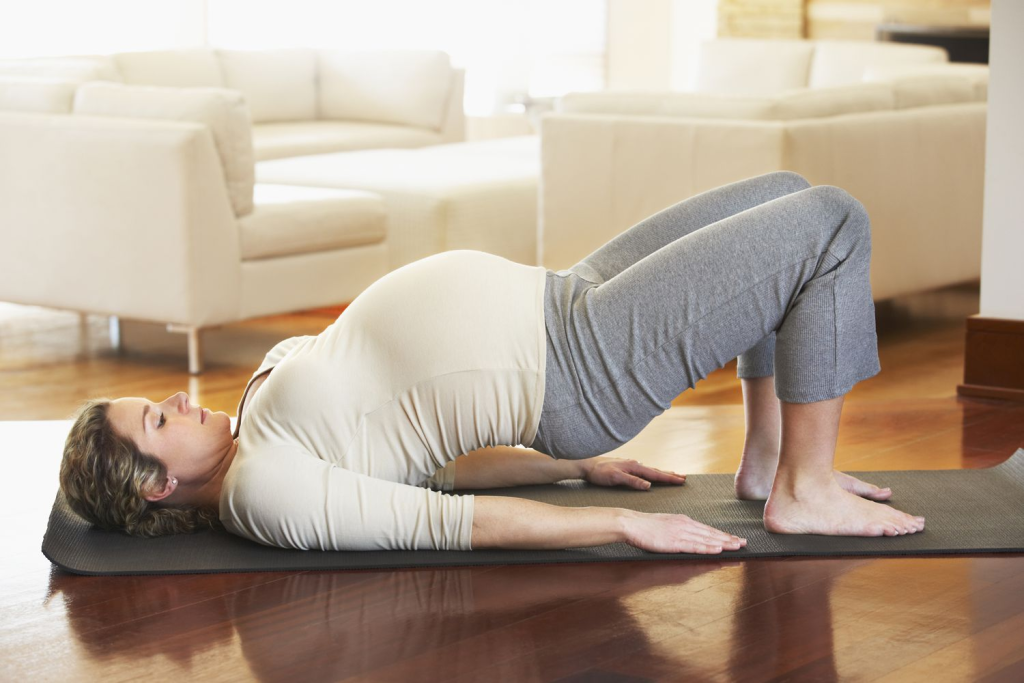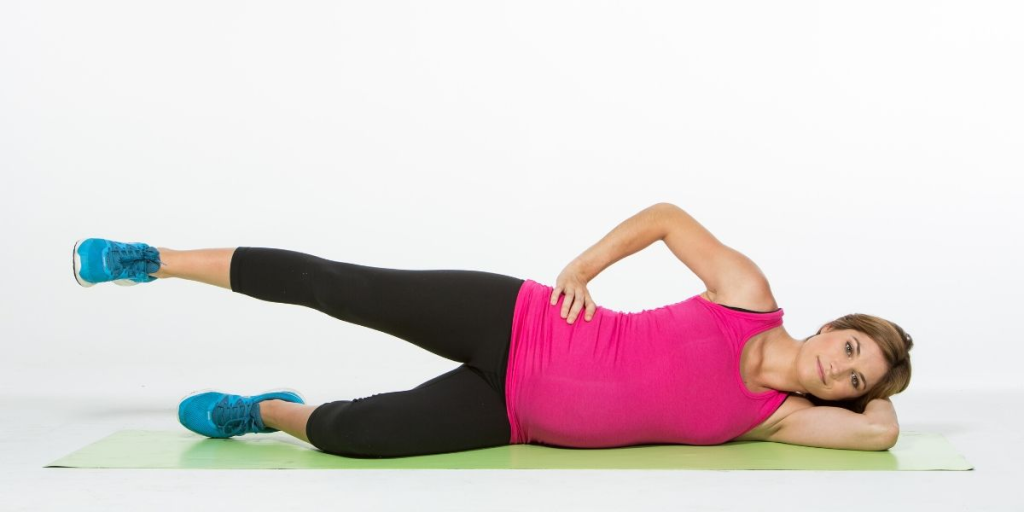“Imagine gliding into your delivery day feeling strong, confident, and pain‑free—no scrambling through last‑minute workouts or worrying if your body is ready.” That’s the power of committing just five minutes a day to pregnancy‑safe exercises. Whether you’re a busy mom‑to‑be juggling work and errands or simply craving a straightforward routine, these targeted moves can help pave the way for a smoother, more comfortable delivery.

Table of Contents
Why Five Minutes Matters
- Consistency Trumps Duration
Even brief, daily activity stimulates blood flow, boosts mood, and primes your muscles for labor. - Gentle but Effective
This mini‑routine focuses on stability, flexibility, and breathing—key elements that pay dividends when it’s time to push. - “Did You Know?”
Gentle prenatal exercise can reduce the risk of labor complications by up to 24% and shorten labor time by nearly an hour, according to multiple studies.
Do’s and Don’ts of Your 5‑Minute Daily Pregnancy Exercise
| Do’s | Don’ts |
|---|---|
| Warm up with gentle marching in place for 30 seconds before starting the routine. | Hold your breath—always use smooth, diaphragmatic breathing. |
| Focus on form: keep your spine neutral and knees aligned over toes. | Over‑exert: avoid deep squats or intense holds that cause pain. |
| Use support (chair, wall) if you feel unsteady. | Lock your joints—keep a slight bend in knees and elbows. |
| Hydrate before and after your session. | Push through dizziness, sharp pain, or unusual discomfort. |
| Modify range of motion as your bump grows. | Lie flat on your back after week 20 without elevation. |
| Listen to your body: rest when you need to. | Compare yourself to others—everyone’s pregnancy is unique. |
| Wear comfortable, supportive footwear or go barefoot on a mat. | Skip medical clearance if you have pregnancy complications. |
| Finish with 30 seconds of gentle stretching or deep breathing. | Rush through exercises—move with control and intention. |
The Core 5‑Minute Routine
Myth Buster: You don’t need an hour in the gym to prepare for childbirth. Quality movement, even in small doses, makes a real difference.
1. Deep Squat with Pelvic Tilt (1 minute)

- Stand with feet hip‑width apart, toes slightly turned out.
- Inhale to sink into a deep squat, keeping heels grounded.
- Exhale and gently tilt your pelvis forward, engaging your lower abdominals.
- Repeat slowly, focusing on smooth inhalations and exhalations.
2. Kegel Holds with Diaphragmatic Breath (1 minute)

- Sit comfortably or lean against a wall.
- Inhale deeply, letting your belly expand; exhale and gently lift pelvic floor muscles as if stopping urine flow.
- Hold each lift for 5 seconds, release on the next inhale, and continue.
3. Seated Cat‑Cow Stretch (1 minute)

- Sit perched at the edge of a chair, feet flat.
- Inhale, arching your back and lifting your chest (Cow).
- Exhale, rounding your spine and tucking your chin (Cat).
- Flow fluidly, synchronizing with your breath.
4. Side‑Lying Leg Lifts (1 minute, 30 seconds per side)

- Lie on your left side, head supported by your arm.
- Keep hips stacked, feet flexed; lift your top leg to hip height, then lower with control.
- Switch sides after 30 seconds.
- Strengthens hip abductors for pelvic stability during birth.
5. Standing Diaphragmatic Breathing & Squat Release (1 minute)

- Stand tall, feet wider than hips.
- Inhale into your belly and ribcage; exhale while performing a partial squat (knees bent slightly).
- Rise on the next inhale, allowing your arms to lift overhead.
Benefits You’ll Feel
- Improved Pelvic Mobility: Eases the baby’s descent.
- Enhanced Core Support: Helps maintain posture as your bump grows.
- Better Pain Management: Promotes relaxation and reduces backache.
- Faster Recovery: Toned muscles bounce back more quickly postpartum.
Safety & Precautions
- Listen to Your Body: Dizziness, sharp pains, or bleeding are signs to stop and consult your healthcare provider.
- Modify as Needed: Use a chair or wall for balance.
- Stay Hydrated: Even light exertion raises your core temperature.
- Avoid Lying Flat After Week 20: Favor side‑lying or seated positions to ensure healthy blood flow.
“Did You Know?”
- The word “exercise” in its original Latin means “to keep busy.” In pregnancy, staying busy with these mini‑moves is key to comfort and confidence.
- Engaging in pelvic‑floor exercises during pregnancy can cut suture needs after an episiotomy by nearly 50%.
Final Thoughts
Transforming your birth experience might be as simple as carving out five minutes each day. As your body changes, these small but intentional exercises build the strength and flexibility you’ll lean on when it matters most. Ready to meet your little one feeling empowered? Roll out your mat, set a timer, and let this mini‑routine become your daily birth prep ritual.
Frequently Asked Questions (FAQs)
Is it safe to do these exercises every day?
Yes—when performed with proper form and within your comfort zone, gentle prenatal exercises are safe daily activities. Always check with your healthcare provider before starting or continuing any exercise routine in pregnancy.
Can I perform this routine if I wasn’t active before pregnancy?
Absolutely. This five‑minute sequence is low‑impact and beginner‑friendly. Begin slowly, focus on proper breathing, and use supports (a chair or wall) as needed.
What’s the best time of day to do these exercises?
Whenever it fits your schedule! Some moms‑to‑be prefer mornings to kickstart energy, while others find evening sessions help unwind. Consistency is more important than timing.
How do I know if I’m doing Kegels correctly?
You should feel a gentle lift and squeeze around the pelvic area, without tensing your glutes or thighs. If unsure, imagine stopping the flow of urine midstream. Discontinue if you experience discomfort, and consult your provider for guidance.
Can I modify the squat depth as my belly grows?
Definitely. As your center of gravity shifts, decrease squat depth or narrow your stance. Focus on comfort and spinal alignment rather than depth.
Will this routine help with back pain?
Yes—movements like the seated Cat‑Cow and pelvic tilts mobilize the spine and strengthen supporting muscles, often alleviating mild to moderate discomfort.
Should I hold my breath during any movement?
Never. Maintain smooth, continuous breathing: inhale in preparation, exhale through exertion. Diaphragmatic breath patterns support oxygen flow for you and baby.
What if I feel dizzy or short of breath?
Stop immediately, sit or lie down in a comfortable position, and breathe deeply until you feel stable. If dizziness persists, contact your healthcare provider.






Very good